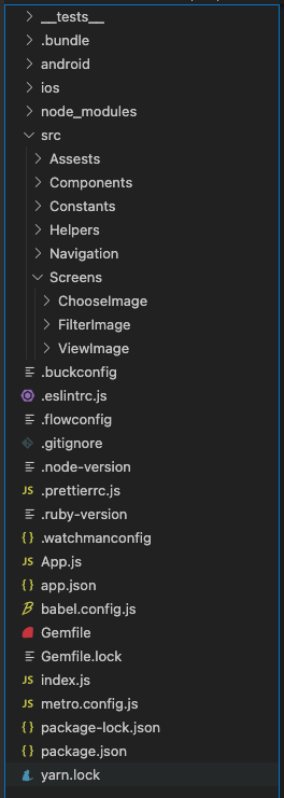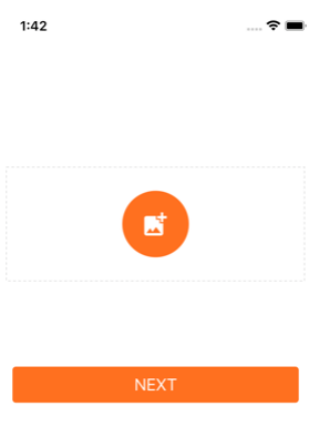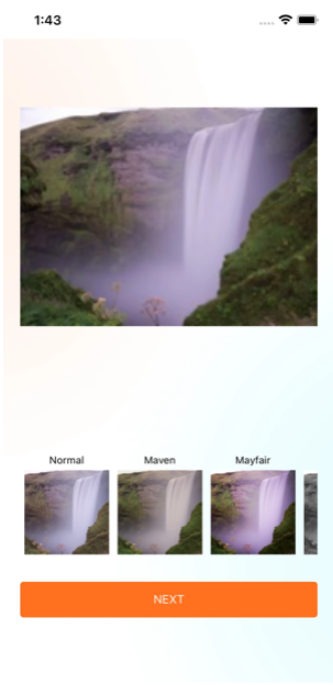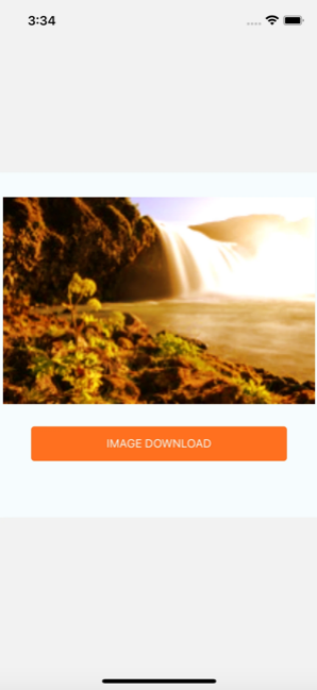审校 | 孙淑娟
开篇
本文通过分步骤的指南,说明如何在React Native中整合图片编辑,并实现类Instagram滤镜的效果。

在Instagram上,你可以很容易地使用滤镜功能,并迅速得到想要的结果。滤镜功能很好地修改照片,让人们得到想要的效果。一些用户想要在自定义的React Native中实现类似的滤镜效果。也就是说将Instagram的滤镜应用到React Native 程序中。
为了满足这个要求,本文编写了一个分步骤的指南,说明如何在React Native中整合图片编辑,实现类似Instagram滤镜的功能。
我们的开发人员在对React Native中的各种过滤器库进行广泛研究之后,并没有找到理想的实现效果。于是,他们想出了在React Native中构建图像滤镜的特别指南。
就让我们手捧指南,从这里出发吧!
前提条件
没有特别的要求,只要确保React Native已经安装,并保证项目已经创建。
虽然,安装React Native和设置并非易事,由于本文主题在如何进行图片编辑,因此不展开说React Native和设置,如果有需要可以访问React Native官网,获取更多信息。
安装相关库
在应用程序中,需要三个主要功能;裁剪、过滤和下载。为了实现这些功能,我们的开发人员已经选择了三个最好的库来支持React Native中的滤镜功能。
1.图像裁剪
图像裁剪允许按照尺寸自由调整裁剪图像。它是移动应用开发不可获缺的重要组成部分。我们可以通过Crop Picker Library来获得裁剪图片的功能。该库还提供了视频编辑功能。
2.图像过滤器
我们使用 React Native Image Filter Kit 来处理应用程序中的图像过滤。基于该工具包,我们创建了一个特殊的代码来生成20多个过滤器。
3.图片下载
为了分享修改后的图片,人们需要将其下载到手机上。这个功能可以从 React Native Cameraroll Library 库中获得,该库可以帮助开发者将过滤后的图片保存在iOS和Android的照片库中。
核心功能开发指南
一旦上述库安装好之后,就可以开始核心功能的开发了。接下来,让我们进入编码部分,实现既定的里程碑。
如图 1 所示,这里列出了文件夹结构,它可以帮助我们理解文件之间的关系以及需要实现的功能。

图1:代码文件结构
第1步:调用手机相册
创建文件夹名为 "ChooseImage"。接下来,添加 "index.jsx "文件。为了从手机图库中获取图片,在'index.jsx'文件中添加以下代码。
import React, { useState } from 'react';
import {
Image,
Alert,
SafeAreaView,
StyleSheet,
Text,
TouchableOpacity,
View,
} from 'react-native';
import { launchImageLibrary } from 'react-native-image-picker';
import {
widthPercentageToDP as wp,
heightPercentageToDP as hp,
} from 'react-native-responsive-screen';
import Constants from '../../Constants/Constants';
import Button from '../../Components/Button';
import Loader from '../../Components/Loader';
import ImagePicker from 'react-native-image-crop-picker';
const CreatePost = ({ navigation }) => {
const [thumbnail, setThumbnail] = useState({});
const [loaderVisible, setLoaderVisible] = useState(false);
const onChooseImage = async (selectionType) => {
const options = {
cameraType: 'back',
mediaType: selectionType,
includeBase64: true,
};
const result = await launchImageLibrary(options);
if (!result.didCancel && result.assets) {
if (selectionType === 'photo') {
const photoData = {
uri: result.assets[0].uri,
type: result.assets[0].type,
name: result.assets[0].fileName,
};
setThumbnail(photoData);
}
}
if (result.errorMessage) console.log('error');
};
const handleNextStepClick = async () => {
if (!thumbnail.length) {
setLoaderVisible(false);
if (!Object.keys(thumbnail).length) {
Alert.alert('Please add thumbnail image');
return;
} else {
return ImagePicker.openCropper({
includeBase64: true,
path: thumbnail,
cropping: false,
freeStyleCropEnabled: true,
compressImageQuality: 0.8,
showCropFrame: true,
mediaType: 'photo',
}).then(image => {
navigation.navigate('FilterScreen', { imageData: image });
})
}
}
};
return (
<SafeAreaView
style={styles.safeView}>
<View
style={styles.imageView}>
{Object.keys(thumbnail).length ? (
<>
<View
style={styles.insideView}>
<Image
source={{ uri: thumbnail?.uri }}
style={styles.thumbImage}
resizeMode={'contain'}
/>
</View>
<View
style={styles.editView}>
<TouchableOpacity
activeOpacity={0.6}
onPress={() => onChooseImage('photo')}
style={{
...styles.addLessonBtnContainer,
marginEnd: 7,
}}>
<Image
source={require('../../Assests/icon_edit.png')}
resizeMode="contain"
style={styles.editImage}
/>
</TouchableOpacity>
<TouchableOpacity
activeOpacity={0.6}
onPress={() => setThumbnail({})}
style={styles.addLessonBtnContainer}>
<Image
source={require('../../Assests/delete.png')}
resizeMode="contain"
style={styles.editImage}
/>
</TouchableOpacity>
</View>
</>
) : (
<>
<View style={{ ...styles.pickContainer, }}>
<TouchableOpacity
onPress={() => onChooseImage('photo')}
activeOpacity={0.7}>
<View style={styles.galleryView}>
<Image
source={require('../../Assests/Pick.png')}
style={styles.galleryImg}
resizeMode="contain"
/>
</View>
</TouchableOpacity>
</View>
<View
style={styles.postTextView}>
<Text style={styles.introText}>
{Constants.create_post_story}
</Text>
</View>
</>
)}
</View>
<View style={styles.buttonView}>
<Button
title={Constants.next}
onclick={handleNextStepClick}
style={styles.button_next}
/>
</View>
<Loader titleText={''} visible={loaderVisible} />
</SafeAreaView>
);
};
const styles = StyleSheet.create({
button_next: {
textTransform: 'uppercase',
fontSize: wp('5%'),
color: 'white',
marginHorizontal: wp('7%')
},
editView: {
justifyContent: 'flex-end',
alignItems: 'center',
marginTop: wp('5%'),
alignSelf: 'flex-end',
display: 'flex',
flexDirection: 'row',
},
imageView: {
paddingHorizontal: wp('5%'),
paddingVertical: wp('10%'),
backgroundColor: '#FFFFFF',
marginTop: wp('5%'),
width: wp('100%'),
},
insideView: {
width: '100%',
justifyContent: 'center',
alignItems: 'center',
},
thumbImage: {
width: wp('100%'),
height: wp('80%'),
},
editImage: {
width: wp('4.5%'),
height: wp('4.5%'),
tintColor: '#FFFFFF',
},
galleryView: {
height: wp('20%'),
width: wp('20%'),
backgroundColor: '#FF701F',
borderRadius: 40,
justifyContent: 'center',
alignItems: 'center'
},
galleryImg: {
height: wp('7%'),
width: wp('7%'),
tintColor: 'white'
},
postTextView: {
marginTop: wp('5%'),
},
safeView: {
flex: 1,
backgroundColor: '#fff',
},
buttonView: {
marginTop: wp('7%'),
marginBottom: wp('3%')
},
pickContainer: {
borderWidth: 1,
borderColor: '#DFDFDF',
marginTop: hp('10%'),
justifyContent: 'center',
alignItems: 'center',
borderStyle: 'dashed',
width: '100%',
paddingVertical: wp('7%'),
},
addLessonBtnContainer: {
backgroundColor: '#FF701F',
borderRadius: 4,
paddingHorizontal: wp('3%'),
paddingVertical: wp('2%'),
},
introText: {
textTransform: 'uppercase',
textAlign: 'center',
textAlignVertical: 'center',
color: '#1F1F1F',
fontSize: wp('5%'),
},
});
export default CreatePost;
输出
一旦完成上述代码,并将其添加到之后,你就可以看到如图2所示内容。

图2:调用手机相册
第2步:图像裁剪和调整大小
在第一步中,我们已经在NEXT "按钮上添加了一段代码。因此,当你点击“NEXT”对照片进行裁剪时,就会打开对应的用户界面。用户可以调整图片的大小,也可以旋转它,总之可以对其进行编辑。
选择器提供各种图像比例供用户选取。一旦用户点击了选项按钮,就会出现一个动作表视图。现在,用户可以选择一个预定义的比例对照片进行裁剪了。
第3步:创建图像过滤器
现在,选择和裁剪功能已经准备好了。接下来,是时候添加图像过滤功能了。现在让我们创建一个新的文件夹,并命名为Filter Image"。再次,在新文件夹下面创建一个文件
import React, { useRef, useState, useEffect } from 'react';
import {
widthPercentageToDP as wp,
heightPercentageToDP as hp,
} from 'react-native-responsive-screen';
import {
FlatList,
Image,
SafeAreaView,
StyleSheet,
Text,
TouchableOpacity,
ImageBackground,
View,
} from 'react-native';
import { FILTERS } from '../../Helpers/Filters';
import Button from '../../Components/Button';
import Constants from '../../Constants/Constants';
import { KeyboardAwareScrollView } from 'react-native-keyboard-aware-scroll-view';
const FilterScreen = ({ navigation, route }) => {
const [selectedFilterIndex, setIndex] = useState(0);
const [image, SetImage] = useState('')
const [thumbnail, setThumbnail] = useState({});
useEffect(() => {
getImageFromNavigation()
})
const getImageFromNavigation = () => {
if (route?.params?.imageData) {
setThumbnail(route?.params?.imageData)
}
}
const onExtractImage = ({ nativeEvent }) => {
SetImage(nativeEvent.uri)
extractedUri.current = nativeEvent.uri;
};
const onSelectFilter = selectedIndex => {
setIndex(selectedIndex);
};
const extractedUri = useRef(thumbnail?.path);
const handleNextStepClick = async () => {
if (selectedFilterIndex === 0) {
navigation.navigate('ViewImage', { imageString: thumbnail })
} else {
console.log('goinfFromHere');
navigation.navigate('ViewImage', { imageString: image })
}
};
const renderFilterComponent = ({ item, index }) => {
const FilterComponent = item.filterComponent;
const image = (
<Image
style={styles.filterSelector}
source={{ uri: thumbnail?.path }}
defaultSource={require('../../Assests/Pick.png')}
/>
);
return (
<TouchableOpacity onPress={() => onSelectFilter(index)}>
<Text style={styles.filterTitle}>{item.title}</Text>
<FilterComponent image={image} />
</TouchableOpacity>
);
};
const SelectedFilterComponent = FILTERS[selectedFilterIndex].filterComponent;
return (
<>
<SafeAreaView
style={styles.safeView}>
<ImageBackground
source={require('../../Assests/image_background.png')}
style={styles.container}>
<KeyboardAwareScrollView
contentContainerStyle={styles.keyboardContainer}
resetScrollToCoords={{ x: 0, y: 0 }}>
{selectedFilterIndex === 0 ? (
<Image
style={styles.default_Img}
source={{ uri: thumbnail?.path }}
resizeMode='contain'
/>
) : Object.keys(thumbnail).length && (
<SelectedFilterComponent
onExtractImage={onExtractImage}
extractImageEnabled={true}
image={
<Image
style={styles.default_Img}
source={{ uri: thumbnail?.path }}
resizeMode='contain'
/>
}
/>
)}
<FlatList
data={FILTERS}
keyExtractor={item => item.title}
showsHorizontalScrollIndicator={false}
horizontal={true}
renderItem={renderFilterComponent}
/>
<View style={styles.buttonView}>
<Button
title={Constants.next}
onclick={handleNextStepClick}
style={{ textTransform: 'uppercase' }}
/>
</View>
</KeyboardAwareScrollView>
</ImageBackground>
</SafeAreaView>
</>
);
};
const styles = StyleSheet.create({
default_Img: {
flex: 1,
width: wp('100%'),
height: hp('50%'),
alignSelf: 'center',
alignContent: 'center'
},
keyboardContainer: {
width: wp('90%'),
},
buttonView: {
marginTop: wp('7%'),
marginBottom: wp('3%')
},
safeView: {
flex: 1,
backgroundColor: '#fff',
},
filterSelector: {
width: 100,
height: 100,
margin: 5,
},
filterTitle: {
marginTop: 70,
fontSize: 12,
textAlign: 'center',
},
container: {
flex: 1,
justifyContent: 'center',
backgroundColor: '#FFFFFF',
alignItems: 'center',
},
});
export default FilterScreen;
输出
完成上述代码之后,如图3所示,应用程序的所有过滤器都是可见的了,用户可以选择任意一个滤镜对图片进行处理了。

图 3:图片过滤器应用
第4步:图像保存和下载
完成上述功能之后,接着就需要编写保存/下载图片的功能,否则应用是玩不转的。由于我们在上一步过滤器的基础上添加下载功能的代码。
和前面两个步骤一样,创建一个名为自定义图片。
import React, { useState, useEffect } from 'react';
import {
View,
StyleSheet,
Image,
Platform,
PermissionsAndroid
} from 'react-native';
import { CameraRoll } from "@react-native-camera-roll/camera-roll";
import {
widthPercentageToDP as wp,
heightPercentageToDP as hp,
} from 'react-native-responsive-screen';
import Constants from '../../Constants/Constants';
import Button from '../../Components/Button';
const ViewImage = ({ route }) => {
const [thumbnail, setThumbnail] = useState({});
const [photos, setPhotos] = useState('');
useEffect(() => {
getImageFromNavigation()
})
const getImageFromNavigation = () => {
if (route?.params?.imageString) {
console.log('params-->', route?.params?.imageString);
setThumbnail(route?.params?.imageString)
setPhotos(route?.params?.imageString)
}
}
async function hasAndroidPermission() {
const permission = PermissionsAndroid.PERMISSIONS.WRITE_EXTERNAL_STORAGE;
const hasPermission = await PermissionsAndroid.check(permission);
if (hasPermission) {
return true;
}
const status = await PermissionsAndroid.request(permission);
return status === 'granted';
}
async function savePicture() {
if (Platform.OS === "android" && !(await hasAndroidPermission())) {
return;
}
CameraRoll.save(photos, { type: 'photo' })
};
return (
<View style={styles.container}>
<Image
source={{ uri: photos !== '' ? photos : thumbnail?.path }}
style={styles.imgView}
/>
<View style={styles.buttonView}>
<Button
title={Constants.image_download}
onclick={savePicture}
style={{ textTransform: 'uppercase' }}
/>
</View>
</View>
);
};
const styles = StyleSheet.create({
imgView: {
width: wp('100%'),
height: hp('30%'),
resizeMode: 'contain'
},
container: {
flex: 1,
alignItems: 'center',
backgroundColor: '#F5FCFF',
paddingTop: 30,
marginVertical: hp('25%')
},
buttonView: {
marginTop: wp('7%'),
marginBottom: wp('3%'),
width: wp('80%'),
},
});
export default ViewImage;
输出结果如图4 所示。

图4:图片下载
总结
根据上述指南,你已经完成了代码的编写。这里对整个指南稍做总结,在保证React Native安装和配置的前提下,分别安装图像裁剪、图像过滤和图片下载的相关库。然后,根据四步实现滤镜功能的开发,包括:调用手机相册、图像裁剪和调整图片大小、创建图像过滤器以及保存和下载图像。
译者介绍
崔皓,51CTO社区编辑,资深架构师,拥有18年的软件开发和架构经验,10年分布式架构经验。
原文标题:A Guide to Implement Instagram-Like Filters in React Native,作者:Kiran Beladiya




































